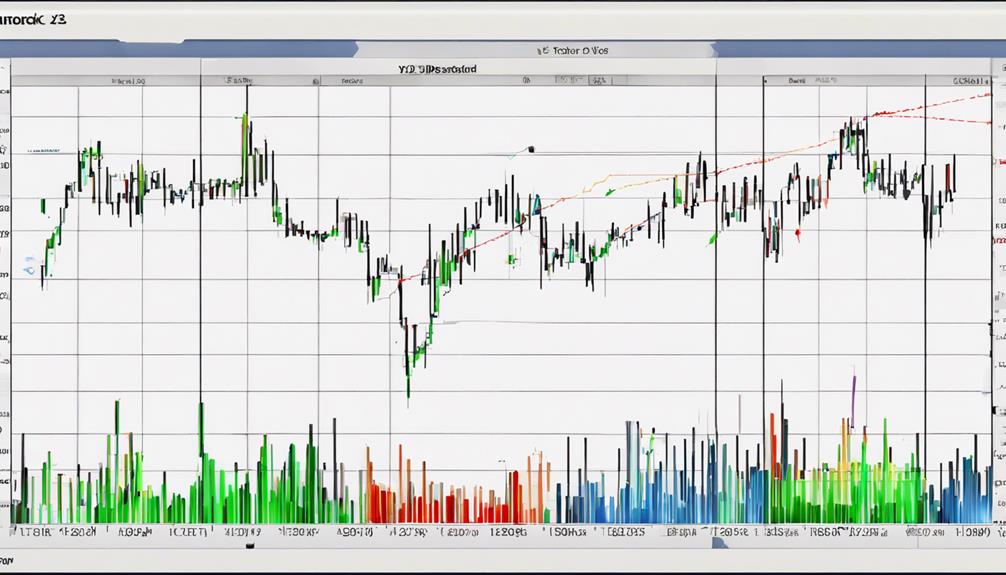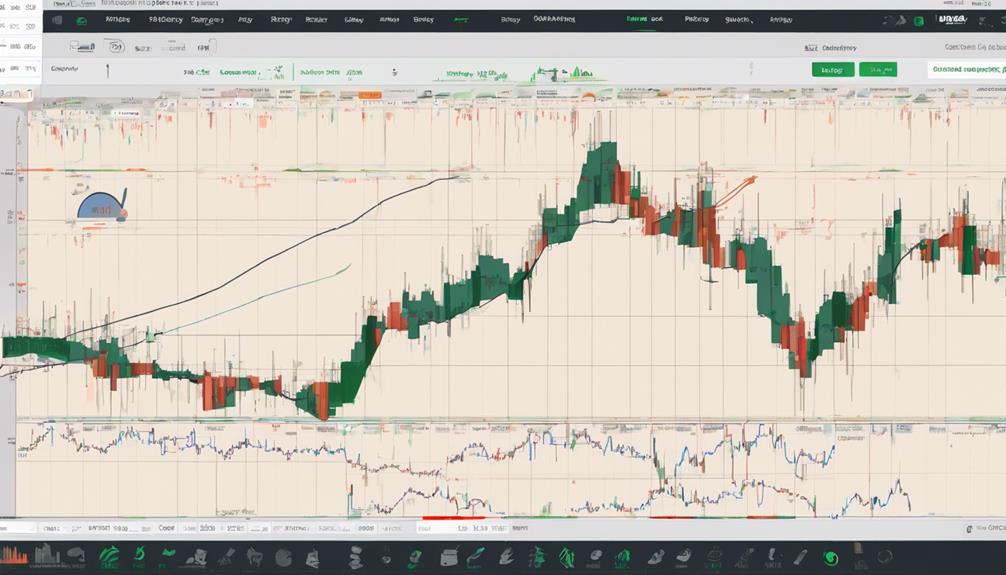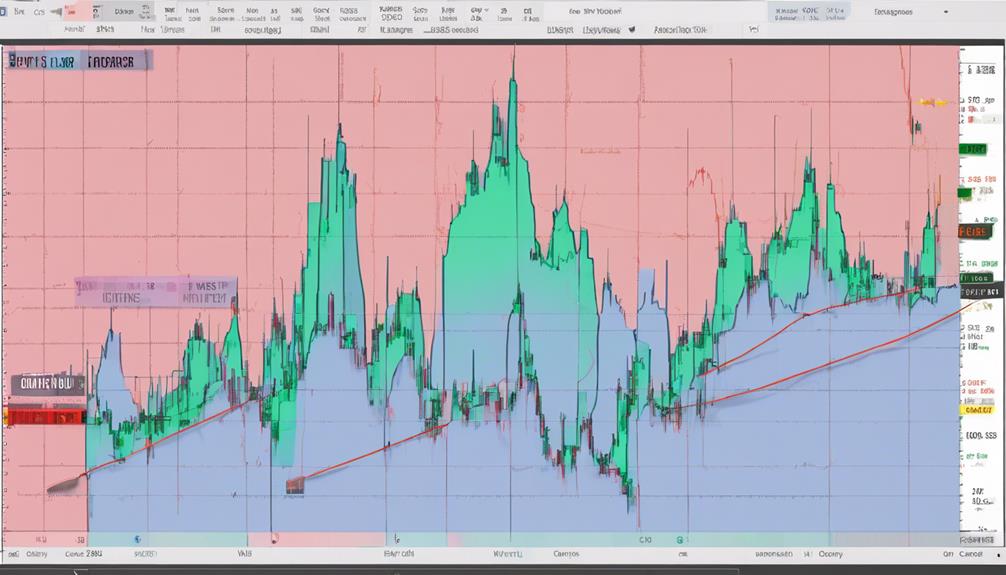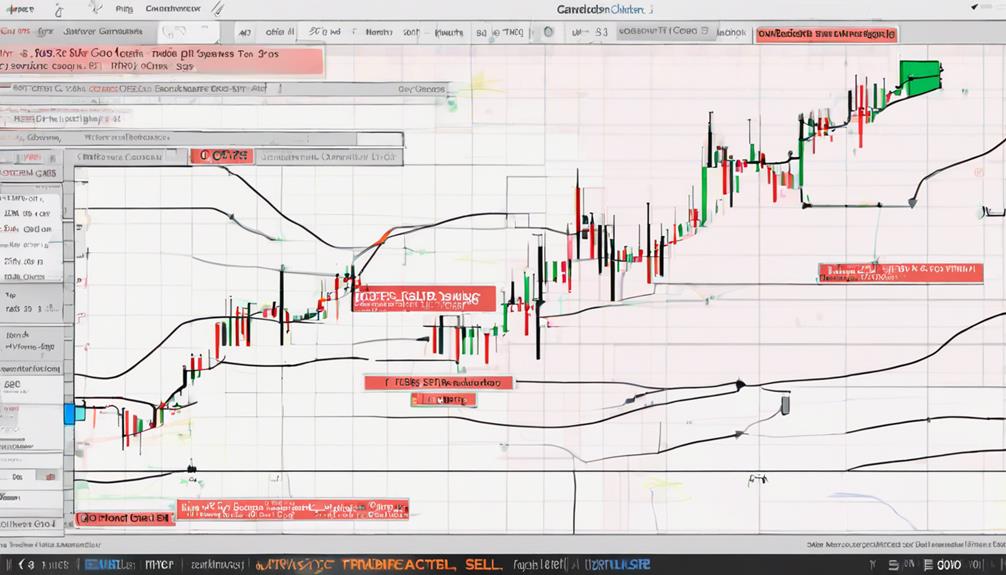As traders navigate the complexities of financial markets, mastering essential tools like the Ultimate Oscillator can significantly impact their success. The Ultimate Oscillator offers a holistic view of market momentum by incorporating multiple timeframes, making it a valuable asset for traders seeking more nuanced insights.
However, simply understanding the mechanics of this indicator is not enough. To truly leverage its power, traders must grasp the finer points of implementing it effectively. By exploring seven key tips for maximizing the potential of Ultimate Oscillator trading strategies, traders can elevate their analytical skills and decision-making processes to achieve more consistent and informed outcomes.
Understanding the Ultimate Oscillator
In the realm of technical analysis, a thorough comprehension of the Ultimate Oscillator is paramount for traders seeking to gauge market momentum effectively. The Ultimate Oscillator (UO) is a versatile indicator devised by Larry Williams in 1976, designed to capture momentum across varying timeframes by incorporating price data from 7, 14, and 28 periods. This amalgamation enables traders to assess market conditions and potential trends.
When the Ultimate Oscillator registers below 30, it signifies oversold conditions, indicating a possible buying opportunity. Conversely, readings surpassing 70 suggest overbought scenarios, signaling a potential selling opportunity. The UO is commonly set with default parameters of 7, 14, and 28 periods for standard interpretation. Traders often use the Ultimate Oscillator to identify divergence between price movements and the oscillator, which can provide valuable insights into potential trend reversals.
This oscillator typically appears in a separate window below the main price chart in charting software, offering a visual representation of market momentum.
Calculating the Ultimate Oscillator

The calculation of the Ultimate Oscillator involves combining Buying Pressure and True Range over different periods in a specific proportion. By understanding the key components and the formula breakdown, traders can interpret the oscillator's movements more effectively.
These points provide a foundation for developing trading strategies based on the Ultimate Oscillator.
Key Components Explained
Key components of the Ultimate Oscillator are elucidated through a comprehensive calculation process that integrates three distinct timeframes. This technical tool helps traders assess market momentum and potential buying or selling opportunities by analyzing Buying Pressure and True Range.
The key components include:
- Timeframes: The oscillator combines 7, 14, and 28-period timeframes.
- Buying Pressure (BP): Reflects a stock's closing relative to current and previous lows.
- True Range (TR): Measures the range from the current high or prior close to the current low or prior close.
- Weighted Average Calculation: Involves specific weightings for each timeframe to calculate the Ultimate Oscillator value.
Understanding these components is essential for traders to effectively use the Ultimate Oscillator in their technical analysis.
Formula Breakdown Simplified
Utilizing a comprehensive mathematical approach, the calculation process for the Ultimate Oscillator involves intricately determining buying pressure and true range across varying timeframes. Developed by Larry Williams, this momentum indicator utilizes multi-timeframe analysis to provide a reliable momentum indication.
The formula combines weighted averages of buying pressure for 7, 14, and 28 periods, along with true range measurements. Buying Pressure (BP) is calculated as the difference between the close price and the minimum of the low price or previous close. True Range (TR) measures the high to low range between current and prior closes.
Interpretation Tips for Trading
To effectively interpret the Ultimate Oscillator for trading, it is crucial to understand how the calculated values reflect market momentum and potential trading signals. When analyzing the Ultimate Oscillator Indicator, pay attention to different timeframes to capture varying market conditions.
Here are some key points to consider:
- Identify potential buy signals when the Ultimate Oscillator crosses above 70.
- Watch for bearish divergence between price action and the Ultimate Oscillator, signaling a possible trend reversal.
- Look for bullish divergence as a sign of a potential uptrend.
- Be cautious of overbought and oversold conditions, which can indicate upcoming reversals in the market.
Understanding these aspects can enhance your trading strategies and utilization of this momentum oscillator among technical indicators.
Advantages of Using the Oscillator

The Ultimate Oscillator offers distinct advantages for traders seeking to analyze market momentum and identify potential trend shifts. By trading with the Ultimate Oscillator, investors can effectively identify overbought and oversold conditions in the market, with readings above 70 and below 30 indicating these extremes.
This information can help traders determine optimal entry and exit points, generating buy and sell signals based on the oscillator's readings. Moreover, recognizing a divergence between the price action and the Ultimate Oscillator can provide early indications of potential trend reversals or weakening trends, allowing traders to adjust their positions accordingly.
When used in conjunction with other technical indicators, the Ultimate Oscillator can confirm signals and enhance the overall effectiveness of trading strategies. Its ability to reduce the risk associated with volatile price movements while accurately capturing momentum and trend dynamics further highlights the benefits of the Ultimate Oscillator as a valuable tool for market analysis and decision-making.
Limitations of the Oscillator

Given the complexities of market dynamics and the intricacies of trading strategies, understanding the limitations of the Ultimate Oscillator becomes imperative for traders aiming to make informed decisions in fluctuating market conditions. When utilizing the Ultimate Oscillator in trading strategies, traders should be aware of the following limitations:
- The Ultimate Oscillator may have slow reactions to sudden price changes due to its multi-timeframe construction.
- It can potentially miss trading opportunities or provide delayed signals in rapidly changing markets.
- The oscillator's effectiveness might be reduced in low volatility or sideways market conditions.
- Traders should use additional tools and indicators to complement the Ultimate Oscillator and mitigate its limitations.
It is essential for traders to acknowledge these limitations to enhance the efficacy of their trading decisions. By recognizing the constraints of the Ultimate Oscillator, traders can adapt their strategies accordingly and utilize additional tools to navigate varying market conditions effectively.
Implementing the Oscillator in Trading

When implementing the Ultimate Oscillator in trading, traders can utilize it for various applications such as identifying overbought and oversold conditions and spotting potential trend reversals through divergences.
Developing a trading strategy with the oscillator involves integrating it with other indicators to enhance decision-making.
Additionally, setting stop-loss levels based on the signals generated by the Ultimate Oscillator is essential for effective risk management in trading.
Oscillator Application in Trading
Utilizing the Ultimate Oscillator effectively in trading requires a keen understanding of market dynamics and the ability to interpret divergences for strategic decision-making. When applying the oscillator in trading, traders should consider:
- Identifying Trend Reversals: The Ultimate Oscillator helps spot potential shifts in market direction.
- Analyzing Buying and Selling Pressure: It gauges the balance between buyers and sellers in the market.
- Utilizing Price Momentum: Traders can leverage the oscillator to assess the strength of price movements.
- Avoiding False Signals: Due to its sensitivity, traders should be cautious of potential false signals.
The Ultimate Oscillator, developed by Larry Williams, is a powerful tool for traders across various timeframes and asset classes, enhancing their technical analysis strategies.
Trading Strategy With Oscillator
Incorporating the Ultimate Oscillator into trading strategies enhances technical analysis by providing a comprehensive view of momentum derived from multiple periods. Traders can utilize the oscillator to identify overbought and oversold conditions, indicating potential reversal points when readings surpass 70 or fall below 30.
Moreover, incorporating divergence signals from the Ultimate Oscillator can offer insights into upcoming trend reversals. Setting effective stop-loss levels based on the oscillator's indications is crucial for efficient risk management.
Integrating the Ultimate Oscillator with other indicators can further enhance the accuracy of trading signals, offering a more holistic approach to decision-making in the financial markets. By combining these elements, traders can develop robust trading strategies that capitalize on the oscillator's capabilities within a comprehensive risk management framework.
Example Strategies With the Oscillator

What are some effective strategies that leverage the Ultimate Oscillator for optimal trading outcomes? Utilizing the Ultimate Oscillator effectively involves understanding its signals and incorporating them into robust trading strategies. Here are some example strategies to consider:
- Identifying Trend Reversals: Use the Ultimate Oscillator on different time frames to pinpoint potential trend reversals in the market.
- Divergence Signals: Watch for divergence occurrences on the Ultimate Oscillator, as they can indicate shifts in the momentum of an asset and potential trading opportunities.
- Confirmation with Other Indicators: Combine the Ultimate Oscillator with technical indicators like moving averages or Bollinger Bands to validate trading signals and enhance decision-making.
- Setting Buy Signals: When the Ultimate Oscillator provides a buy signal, consider market trends and price action to confirm potential entry points for trades.
Key Considerations for Oscillator Trading

To optimize trading outcomes with the Ultimate Oscillator, understanding key considerations for oscillator trading is essential. The Ultimate Oscillator stands out due to its unique combination of data from 7, 14, and 28 periods, offering a comprehensive analysis of momentum in the market.
It oscillates between 0 and 100, with levels above 70 indicating overbought conditions and below 30 signaling oversold conditions. Divergences between price movements and the Ultimate Oscillator can help traders identify potential buy and sell opportunities, hinting at upcoming trend changes.
Confirming these divergence signals with other indicators or price action analysis can enhance trading accuracy, providing more confidence in decision-making. Proper risk management practices are paramount when using the Ultimate Oscillator, such as setting stop-loss orders based on the oscillator's signals to protect capital.
How Can I Use Ultimate Oscillator in Trading with the Essential Tips Provided?
When it comes to ultimate oscillator trading methods, it’s important to understand the essential tips for effective use. By utilizing multiple timeframes and identifying overbought/oversold conditions, traders can enhance their decision-making process. Additionally, incorporating trend analysis can further optimize the effectiveness of the ultimate oscillator in trading.
Frequently Asked Questions
How Do You Trade With Ultimate Oscillator?
Trading with the Ultimate Oscillator involves identifying buy signals below 30 and sell signals above 70. Confirm signals with other indicators for accuracy. Set stop-loss orders based on oscillator readings for risk management. Utilize divergences to spot trend reversals and adjust strategies accordingly.
What Is Ult 7 14 28?
Ult 7 14 28 in the Ultimate Oscillator context refers to default parameters for analyzing price momentum over short, medium, and long terms. This combination aids traders in spotting overbought and oversold conditions for potential trading opportunities.
What Is the Pretty Good Oscillator Strategy?
The Pretty Good Oscillator Strategy leverages the Ultimate Oscillator to pinpoint overbought and oversold market conditions. Traders utilize divergence signals for potential trend reversal indications. This strategy emphasizes strategic entry and exit points by effectively integrating the Ultimate Oscillator with other indicators and price action analysis.
How Do You Use Awesome Oscillator in Trading Strategy?
Utilize the Awesome Oscillator in trading strategies by interpreting its oscillations to gauge market momentum. Positive values signify bullish trends, while negative values indicate bearish momentum. Consider combining it with other indicators for comprehensive trend analysis.
Conclusion
In conclusion, the Ultimate Oscillator is a valuable tool for traders looking to enhance their strategies by incorporating multiple timeframes and identifying potential trend reversal points. By understanding its calculation method, advantages, limitations, and implementation in trading, traders can make more informed decisions.
With careful consideration of key factors and utilization of the oscillator in conjunction with other indicators, traders can improve their trading outcomes.
How will you integrate the Ultimate Oscillator into your trading approach?


